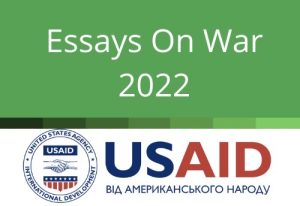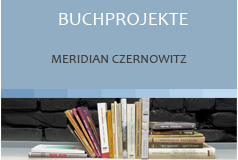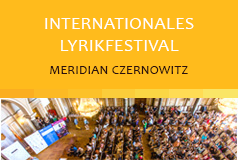Ukrainian victory: How do we see it?
Not all wars have a clear-cut outcome of victory or defeat. In fact, many wars since the Second World War have had ambiguous results, leading to multiple interpretations of who actually emerged as the winner or loser. Some examples include military conflicts that have become frozen or semi-frozen, with no peace treaties or armistices in place, resulting in a quasi-stable front line that can persist for decades.
The main reason behind this trend is that wars are no longer isolated and localized events where one force clearly prevails over the other; the balance of power and the limited scope of the conflict determines the outcome. In modern times, open wars are more likely to become stuck in a state of limbo because various external forces often support the opposing sides to prevent them from losing.
In less than a year, Russia’s war against Ukraine has evolved from a mere imperialist revanchist conflict into what many perceive as a nearly global conflict or even the start of the Third World War. Dozens of countries worldwide are now indirectly involved, with the number of such countries increasing at an alarming pace.
About 50 democratic nations have rallied around Ukraine, offering various forms of assistance. Meanwhile, Russia has allied itself with a motley crew of outcasts, including North Korea, China, Iran, Syria, and terrorist groups such as Hamas, the Taliban, and Hezbollah. These alliances have enabled Russia to circumvent sanctions imposed on it.
As a result of the ongoing war, the world has experienced a historic first. In this civilizational split, a democratic society is defending itself against an aggressive military onslaught from an authoritarian and totalitarian one.
Ukraine desires peace from this conflict that provides the country with tangible long-term assurances against future attacks in the coming decades. However, with its current borders and history, it is difficult to envision Russia transforming into a democratic nation that lives peacefully with its neighboring countries. Regardless of its leadership, Russia will inevitably revert to a renewed imperialist format, as those were the preexisting conditions of the nation that brought Putin to power. As a result, the struggle will continue until a decisive, crushing defeat is inflicted upon them.
Russia must completely withdraw its troops from Ukrainian territory beyond the borders established in 1991. Additionally, the Russian leadership and all those responsible for criminal acts must be brought before the International Criminal Court (also known as the „New Nuremberg“) and face justice. Ukraine should receive full reparations and compensation for the economic damages caused by the war. To ensure peace for the next 30 years, Russia must be crushed entirely, demilitarized, and denazified. If these conditions are accepted, Ukrainian victory should be seen as intrinsically linked to Russia’s crushing defeat in the war and its ideally controlled disintegration into several fragments, some of which may have limited chances of becoming democratic nations in the future.
As a theoretical physicist by education, I often contemplate the principles of probability theory. The viewpoints presented in this essay are subjective and based on my observations of the world around me. It’s worth noting that I genuinely hope to be mistaken in my evaluations of the situation both inside and outside our country.
In this article, I will outline the four primary outcomes of this war, beginning with the least probable and concluding with the most probable one.
The first option – The ideal outcome
If Ukraine, with the assistance of its allies, emerges victorious in this war, Russia will eventually surrender. International occupying forces will then assume control over Russian territory, which will be peacefully divided into natural parts that will gradually evolve into separate countries. With the support of a coalition of allies, a new economic and democratic system will be implemented, complete with democratic elections, an independent judiciary, and other essential components of a democratic civilization. The Second World War serves as an example of such a scenario. However, this outcome comes with a high cost, both in terms of human casualties and economic sacrifices.
The second option – A compromise
The Ukrainian Armed Forces successfully expel Russian troops from their country, temporarily ending hostilities. Russia remains within its borders under an authoritarian regime, subject to certain sanctions because it refuses to comply with the terms of the victors. It drags out peace negotiations due to a lack of interest, harbors dreams of revenge, provokes skirmishes and shelling across the border, accumulates weapons and resources with the help of its rogue allies, and, after several years, launches another war against Ukraine. The wars in the Middle East serve as an example of this scenario.
However, this outcome comes with a high cost, including significant human casualties and economic sacrifices.
The third option – An unsatisfactory outcome
The third option is an unsatisfactory outcome where Ukraine can only reclaim a portion of its territory, that is, the borders which existed until February 23, 2022. Despite the lack of a formal armistice, neither side wants peace and chooses to continue the war. However, since neither side has significant resources, the war remains ongoing.
This outcome comes at a moderate cost and number of casualties.
The fourth option – Hopelessness
The fourth option is a bleak one: a state of hopelessness. Following a series of forceful offensives and counteroffensives from both sides in the autumn of a given year, the front line becomes somewhat stable. Neither side has the capability to launch new offensives, resulting in a semi-frozen conflict. Though there is still mutual shelling, the level of activity is low, with occasional reconnaissance and sabotage operations and provocations. This „no peace, no war“ scenario becomes a permanent fixture, with no possibility of a radical solution. The war in Donbas between 2017 and 2022 serves as an example of this option. The cost is minimal, but the outcome is discouraging.
It is important to note that the distribution of probabilities regarding Ukraine’s potential for victory mentioned above is not set in stone, as it is influenced by several influential factors such as our determination, perseverance, the support of allies, and most importantly, our ability to achieve mass social integration and, as a result, national consensus. Therefore, we may witness changes or significant shifts in neighboring positions over time.
One thing that is certain is that our defeat is not and will never be a probability.
Translated by Yulia Lyubka and Kate Tsurkan











